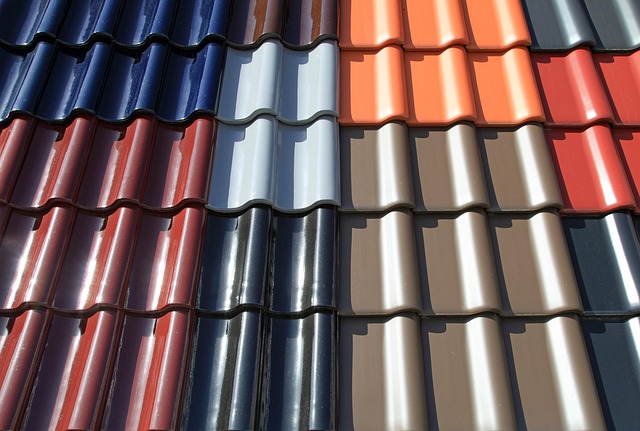Loose or damaged flashing around vents and chimneys is a common but serious issue leading to costly urgent roof leak repairs. Regular inspections are vital to detect problems early, preventing damage from water intrusion. Before repairs, assess for causes like rust, corrosion, or structural movement. Tools needed include weatherproof metal flashing, utility knife, screwdriver, hammer, soapy water, and cloth. Fixing damaged flashing involves removing old material, cutting new pieces to fit, sealing seams with sealant, and testing for leaks. Regular maintenance, including twice-yearly inspections and cleaning, extends the life of flashing, averting urgent repairs.
“The flashing around vents and chimneys is a vital component of your roof’s protective barrier, preventing urgent roof leak repairs. However, over time, this crucial area can become damaged or loose, leading to costly water intrusion. This comprehensive guide addresses the issue head-on, offering insights into identifying problem areas, understanding common causes, and providing a step-by-step repair process. Armed with the right materials, tools, and knowledge, homeowners can effectively fix flashing, averting future roof leaks.”
Understanding the Problem: Identifying Loose or Damaged Flashing
Loose or damaged flashing around vents and chimneys is a common issue that can lead to serious problems, including urgent roof leak repair. Flashing acts as a crucial barrier between your roof and the elements, preventing water from seeping into vulnerable areas. Over time, flashing can become loose due to extreme weather conditions, poor installation, or simply aging. It may also be damaged by animals, wind, or falling debris.
Identifying loose or damaged flashing is essential for maintaining a dry, safe home. Signs of trouble include visible gaps around vents and chimneys, peeling or corroded metal, and stains on your roof or ceilings indicating water intrusion. Regular inspections are key to catching these issues early, preventing costly repairs, and avoiding the aggravation of an unexpected urgent roof leak repair.
Assess the Extent of Damage and Potential Causes
Before addressing any flashing issues, it’s crucial to assess the extent of damage and identify potential causes. Flashing plays a vital role in sealing off joints between your roof and chimney or vents, preventing urgent roof leak repairs. Inspect the area around the chimney and vents for any signs of rust, corrosion, or cracks in the flashing material. These indications could point to long-term exposure to the elements, poor installation, or ongoing moisture intrusion.
Moisture buildup is a common culprit behind damaged flashing, as it weakens materials over time. If left unaddressed, small problems can escalate into costly repairs. Regular maintenance and timely intervention are key to preventing these issues. Keep an eye out for any loose or missing pieces of flashing, as well as gaps that might have developed due to settling or movement in the structure.
Materials and Tools Required for Repair
When it comes to addressing loose or damaged flashing around vents and chimneys, a well-prepared toolkit is key. For an effective urgent roof leak repair, gather the following materials and tools: weatherproof metal flashing, a utility knife for trimming excess material, a screwdriver to remove old nails or screws, and a hammer for setting new ones. Additionally, consider having a bucket of soapy water for cleaning the area and a cloth for wiping down the surface, ensuring a clean and secure installation.
Step-by-Step Guide to Fixing Flashing Around Vents and Chimneys
Fixing loose or damaged flashing around vents and chimneys is an essential step in preventing urgent roof leak repairs. Start by inspecting the area for any signs of wear, corrosion, or gaps. Use a ladder to access the ventilation system and carefully remove any debris or old flashing. Next, measure and cut new flashing to fit snugly around the vent or chimney, ensuring it covers all seams and openings. Apply a bead of weather-resistant sealant along the edges to secure the flashing in place. Once the sealant has dried, test the integrity of the repair by checking for any leaks. Regular maintenance and prompt attention to damaged flashing can save you from costly and inconvenient roof leak repairs.
Prevention and Maintenance Tips for Avoiding Future Issues
Regular maintenance is key to preventing future issues with flashing around vents and chimneys. Start by inspecting your roofing system at least twice a year for any signs of wear or damage. Look for loose or missing flashing, as well as any cracks or holes that could lead to an urgent roof leak repair. Cleaning the area surrounding these vents and chimneys is also essential, removing debris like leaves, twigs, and bird nests can help maintain proper airflow and prevent water damage.
To further safeguard against future problems, consider sealing any gaps around the flashing with a high-quality roofing cement or caulk designed for outdoor use. Additionally, ensuring that your chimney cap is securely in place can prevent debris from building up inside, which could compromise the effectiveness of the flashing over time. Regular maintenance and proactive measures will help extend the life of your flashing, avoiding costly emergency roof repairs.
When it comes to addressing loose or damaged flashing around vents and chimneys, prompt action is crucial to prevent urgent roof leak repairs. By understanding the problem, assessing damage, and following a simple step-by-step guide using suitable materials, you can effectively fix these issues. Regular maintenance and prevention tips will further safeguard your home from future leaks, ensuring a secure and dry environment. Remember, addressing flashing problems early can save you from costly and inconvenient roof repairs down the line.
